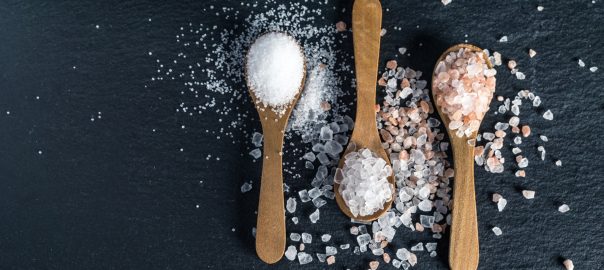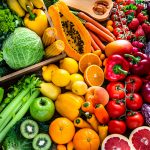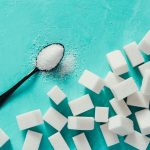
Ketogenic Dieting & Salt
The Importance of Salt on a Keto Diet
Learn how to prevent the keto flu and why getting enough electrolytes when following a ketogenic diet is extremely important.
We have been told over and over that eating too much salt is bad for our health. This is generally the case for most people – unless you follow a ketogenic diet. Sodium is an essential nutrient, especially when the body undergoes the changes involved with ketosis. In this article, we explain why you should manage your sodium and electrolyte intake if you follow a ketogenic diet or low carb diet, plus tips and recipes that can help.
The Role of Sodium and Electrolytes in the Body
The six essential electrolytes we need in our diet are:
- Sodium
- Calcium
- Potassium
- Chloride
- Phosphate
- Magnesium
Electrolytes are chemicals that facilitate nerve and muscle function, regulate blood pressure, balance the amount of water in the body, stabilize the pH (base/acid) level of the body, and help rebuild damaged tissues. Sodium and potassium, in particular, are two electrolytes that help our bodies stay hydrated. It goes without saying that hydration is essential to proper functioning of the brain and our other vital organs. Sodium also plays important roles in nerve cell communication and the functioning of muscle tissues.
A certain level of water is required inside and outside our cells in order for them to function optimally. But how do our cells know how much water to hold onto and when to expel or take in more water? Chemical signaling is the answer, and this is where sodium and other electrolytes come into play. Basically, when there is a high concentration of these molecules on one side of the cell membrane, a process will occur that allows them to pass through the cell membrane until concentration levels are rebalanced. This amazing intuitive process is known as osmosis, and it is one of the ways our body is able to maintain a stable inner state for optimal functioning. It also allows for proper absorption of nutrients and removal of waste materials from various organs.
The Effects of Electrolyte Imbalances
We obtain electrolytes from the foods, fluids and supplements we consume. When we consume too little or too much of them, we can experience side effects. Electrolyte imbalances may occur when we lose fluids (via sweat, urination, vomiting or diarrhea), not drinking or eating enough and due to certain medications or certain heart, kidney and liver disorders. It is unlikely that you are getting too much of these electrolytes in your diet, apart from sodium which can be found in very high amounts in processed foods and restaurant meals. It is best to avoid these types of foods, but still consume sodium in other ways.
The side effects of electrolyte imbalances include:
- Headache
- Confusion
- Fatigue
- Thirst
- Muscle weakness
- Vomiting
- Diarrhea
- Constipation
- Heart problems
- Respiratory problems
Extremely low levels of sodium can also induce comas, seizures and even death in certain cases (a condition called hyponatremia). As you can tell, electrolytes are extremely important to our health! If you suspect you might be deficient in any of these electrolytes, you can get your levels tested after speaking with a physician.
What Happens to Your Body When You Enter Ketosis?
The initial transition into ketosis often comes with a number of uncomfortable physical side effects, which have popularly referred to as the “keto flu”. These side effects usually occur and peak within the first 3-5 days after starting a ketogenic diet, or if you become dehydrated and/or lose a lot of electrolytes while in ketosis. Keto flu symptoms usually include fatigue, brain fog, nausea, constipation, irritability, difficulty sleeping, sugar cravings and muscle soreness. These are all signs that you should increase your water and sodium intake, whether you are just starting a keto diet or experience these symptoms any time during ketosis.
One of the main reasons people experience these symptoms is due to dehydration and electrolyte imbalance. As mentioned, this is usually due to a loss of too many fluids. Ketosis causes more frequent urination, which means that the body’s stores of water and electrolytes get depleted more easily. This fluid loss occurs because the storage of sugar, or glycogen, requires three water molecules for every molecule of glycogen. When the body starts to burn through all of its glycogen stores as you cease consuming more carbs, a lot of these water molecules that were stored previously are expelled as well. This tends to cause rapid weight loss at the beginning of a ketogenic diet, which is mainly water weight. While this can be a good sign that the keto diet is working, it can also lead to severe dehydration if you are not increasing your water and electrolyte intake proportionately.
Restricting carbs from the keto diet also lowers insulin levels, which can further promote water loss. When insulin levels drop, the kidneys react by excreting more sodium and water. If sodium and water levels are not replenished, you can experience the symptoms of keto flu.
How to Consume Sodium Properly
There is a lot of salt (sodium chloride) in processed foods and restaurant foods – but this is no free pass to start eating these frequently to combat the keto flu. These foods tend to contain a lot of other harmful ingredients and there are healthier ways to increase your sodium and electrolyte intake.
Here are some ways you can increase your sodium intake to relieve side effects of keto flu:
- Drink 1 or more cups of salty bone broth every day – this is also a great source of protein and other important nutrients!
- Add 1-2 teaspoons of salt in daily meal preparations.
- Eat pickled foods such as olives, pickles and sauerkraut.
- Choose standard rather than “low-sodium” sauces and seasonings for cooking.
- Shake some salt into a glass of water a couple of times a day. Adding some lemon or lime juice can also help boost hydration.
Keep in mind the difference between sodium and salt. Sodium is a pure mineral, while most table salt is a compound mixture of sodium chloride. While this commodity product might seem all the same to you, there are some healthier choices on the market when it comes to salt. Some of your best choices for salt include:
- Pink Himalayan Salt, which also contains calcium, potassium, magnesium and other beneficial minerals.
- Iodized Salt, which contains iodine that helps with thyroid health.
- Kosher Salt, which is similar to regular table salt (sodium chloride) in composition, except that is prepared in accordance with traditional Jewish law. The larger flake size also adds a different texture and more intense flavour when used in cooking or sprinkled over food.
- Dulse or Dulse Salt – dulse is a type of seaweed that is a great source of sodium, calcium, potassium and iron. Sprinkle dried dulse flakes or dulse salt over food for a great boost of ocean-derived minerals!
Food and Drinks Rich in Electrolytes
Before we dive into some recipes, we developed a list of low carb and keto-friendly food and drinks that are rich in electrolytes. Try incorporating these options into your daily meals to ensure you maintain healthy levels of electrolytes on a low carb or keto diet.
Calcium-Rich Foods:
- Fortified dairy products and plant milks
- Tofu
- Sardines
- Dark leafy greens such as spinach, collard, kale, mustard greens, turnip greens etc.
- Okra
Potassium-Rich Foods:
- Leafy greens
- Mushrooms
- Cucumbers
- Avocados
- Tomatoes
- Zucchini
- Eggplant
- Coconut water
Chloride-Rich Foods:
- Seaweed
- Tomatoes
- Lettuce and leafy vegetables
- Celery
- Olives
Phosphate-Rich Foods:
- Meat
- Poultry
- Fish and seafood
- Organ meats (liver, kidneys, etc.)
- Nuts – salted nuts are also a great way to get more sodium in your diet (and they’re tasty!)
- Dairy products
- Sunflower seeds
- Pumpkin seeds
- Soy
Magnesium-Rich Foods:
- Pumpkin seeds
- Flax seeds
- Chia seeds
- Nuts
- Spinach
- Dark chocolate (aim for 70% or higher and eat in moderation!)
- Avocados
- Tofu
- Salmon, mackerel and halibut
- Leafy greens
Low Carb Electrolyte Recipes
Below, we’ve included some helpful recipes that can make getting your daily electrolyte dosage easier! Use these recipes when you are just starting keto, or when you feel particularly low on electrolytes. Consider bookmarking these recipes for meals to have after a workout, a long day of activity or if you notice yourself experiencing any symptoms of the “keto flu”.
Drinks
- Lemon Lime Electrolyte Drink
- Blueberry Lemon Electrolyte Drink
- Keto Flu Smoothie
- Keto Lemonade with extra-hydrating Aloe Vera!
Breakfast
- Keto Low Carb Granola with electrolyte-balancing nuts and seeds! Use salted butter for more sodium.
- Low Carb Tofu Scramble – finish with dulse salt to bring out those umami flavours!
- Chocolate Peanut Butter Chia Seed Pudding
Lunch
- Garlic Butter Shrimp Zucchini Noodles
- Keto Chicken Salad – this recipe also contains salty pickles and crushed pecans for extra electrolytes!
- Keto Sausage Sauerkraut Soup
Dinner
- Chicken with Mushroom Sauce and Creamy Avocado Cauliflower Rice
- Easy Keto Eggplant Lasagna
- Low Carb Teriyaki Salmon with Simple Sautéed Greens and Salted Turnip Fries
Stay Connected
We hope that you learned something valuable and enjoyed reading this article. If you would like to share your thoughts or experiences, head over to our Facebook and Instagram pages. We also love to read and reply to our reviews on Google, so please take a moment to let us your thoughts there!
We also offer a free Weekly Newsletter subscription, which contains new products, sales, promocodes, updates and more!






